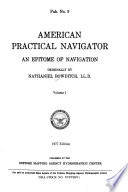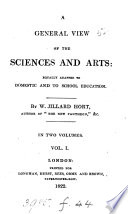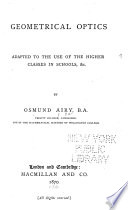 Newton's Three Laws of Motion," and are as follows: (1) All bodies continue in a state of rest, or of uniform motion in a straight line, unless acted upon by some external force that compels a change. Newton's Three Laws of Motion," and are as follows: (1) All bodies continue in a state of rest, or of uniform motion in a straight line, unless acted upon by some external force that compels a change.  Railway Signaling - Page 111by School of Railway Signaling (Utica, N.Y.) - 1910Full view Railway Signaling - Page 111by School of Railway Signaling (Utica, N.Y.) - 1910Full view - About this book
 | Nautical astronomy - 1977 - 1412 pages
...which he believed were applicable to the planets. Newton's laws of motion are : 1. Every body continues in a state of rest or of uniform motion in a straight line unless acted upon by an external force. 2. When a body is acted upon by an external force, its acceleration... | |
 | William Jillard Hort - 1822 - 308 pages
...kinds of motion, which are commonly denominated Newton's laws of motion. First. Every body will remain in a state of rest, or of uniform motion in a straight line, unless it be compelled to change that state, by forces impressed. Second. The change of motion is always VOL.... | |
 | Denison Olmsted - Astronomy - 1839 - 300 pages
...heavenly bodies. It is commonly called the First Law of Motion and is as follows : Every body perseveres in a state of rest, or of uniform motion in a straight line, unless compelled by some force to change its state. This law has been fully established by experiment, and is conformable... | |
 | Denison Olmsted - Astronomy - 1841 - 486 pages
...great laws of motion, which are three in number. The FIRST LAW is as follows : every body perseveres in a state of rest, or of uniform motion in a straight line, unless compelled by some force to change its state. By force is meant any thing which produces motion. The foregoing... | |
 | Denison Olmsted - Astronomy - 1855 - 318 pages
...heavenly bodies. It is commonly called the First Law of Motion and is as follows : Every bod$ perseveres in a state of rest, or of uniform motion in a straight line, unless compelled by some force to change its state. This law has been fully established by experiment, and is conformable... | |
 | Denison Olmsted - Astronomy - 1855 - 484 pages
...great laws of motion, which are three in number. The FIRST LAW is as follows : every body perseveres in a state of rest, or of uniform motion in a straight line, unless compelled by some force to change its state. By force is meant any thing which produces motion. . The foregoing... | |
 | Robert Johnson (Director of Education.) - Physical sciences - 1855 - 100 pages
...solid bodies have a Centre of Gravity. The three fundamental Laws of Motion. — 1. Every body will continue in a state of rest, or of uniform motion in a straight line, unless it be acted upon by some external force. — 2. Change of Motion is always proportional to the moving... | |
 | Denison Olmsted - Astronomy - 1858 - 318 pages
...heavenly bodies. It is commonly called the First Law of Motion and is as follows : Every body perseveres in a state of rest, or of uniform motion in a straight line, unless compelled by some force to change its state. This law has been fully established by experiment, and is conformable... | |
 | Denison Olmsted - Astronomy - 1858 - 454 pages
...great laws of motion, which are three in number. The FIRST LAW is as follows : every body perseveres in a state of rest, or of uniform motion in a straight line, unless compelled by some force to change its state. By force is meant any thing which produces motion. The foregoing... | |
 | Osmund Airy - Geometrical optics - 1870 - 606 pages
...observation and experiment and are known as Newton's Laws of Motion. First Law. Every body remains in a state of rest or of uniform motion in a straight line unless acted upon by some unbalanced force. Second Law. When a body is acted upon by an unbalanced force,... | |
| |